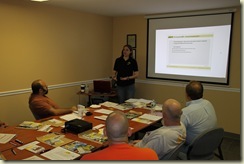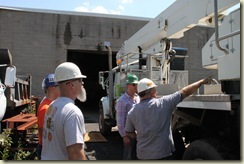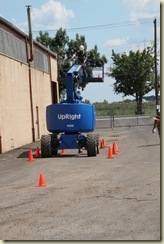The following is written by Mark Hinkel of Hinkel Equipment Rentals
After studying the Notre Dame "Investigation Report, October 27, 2010, Aerial Lift Accident", one is struck by the total lack of a "Safety Culture" exhibited by the various departments and entities involved in the tragedy of Declan Sullivan's death. I realize that the readers of the Notre Dame report are getting the information secondhand, but that information is far from complimentary to the institution.
The analysis of an accident often points to a 'chain' of events that are involved in the accident, any one of which, if addressed, might have broken the chain and prevented the occurrence of the accident. It looks like there was a lot of ignorance of the possible hazards involved in scissor lift operation.
How can the lack of training not be a contributor to the accident? What about the inattention to the requirements that the lift be inspected? Who originated the '35 MPH' wind speed limit for the use of the scissor lifts? If a construction employer had depended on a specification without a basis, and had an accident, then that employer would be at fault.
The lift industry has recognized for years that we have a responsibility to do our part in supplying safe, efficient equipment to users, and to ensure that those users know how to operate the equipment in a proper manner so that the job is completed safely... and then go home. Not everyone is taking their responsibilities seriously.
We in the access industry are working hard to implement the standards like ANSI, ISO and OSHA, that will protect users, but if the regulations are ignored by those in the chain of responsibility, then the path to a disaster like this is much more likely. Proper training will never do anybody any harm, and if there are things that I learned during my own access training: 1). There's a lot that we don't know, and 2). If that formal training causes any of us to stop and look something over, even for a few moments, then that's the idea of saving lives...
A 'Safety Culture' starts at the top, with leaders that are willing to accept responsibility for the conduct and safety of their charges. Start that way, and then the favorable behaviors that save lives will become second nature to all of the involved parties. Denying the obvious, that better training could have enabled Mr. Sullivan to better recognize the wind hazard he was exposed to, is doing an injustice to all of the properly trained operators who work safely every day. This begs the question, "If better training doesn't help to avoid accidents, then why do it?". Training doesn't have a cost, it has a value...





